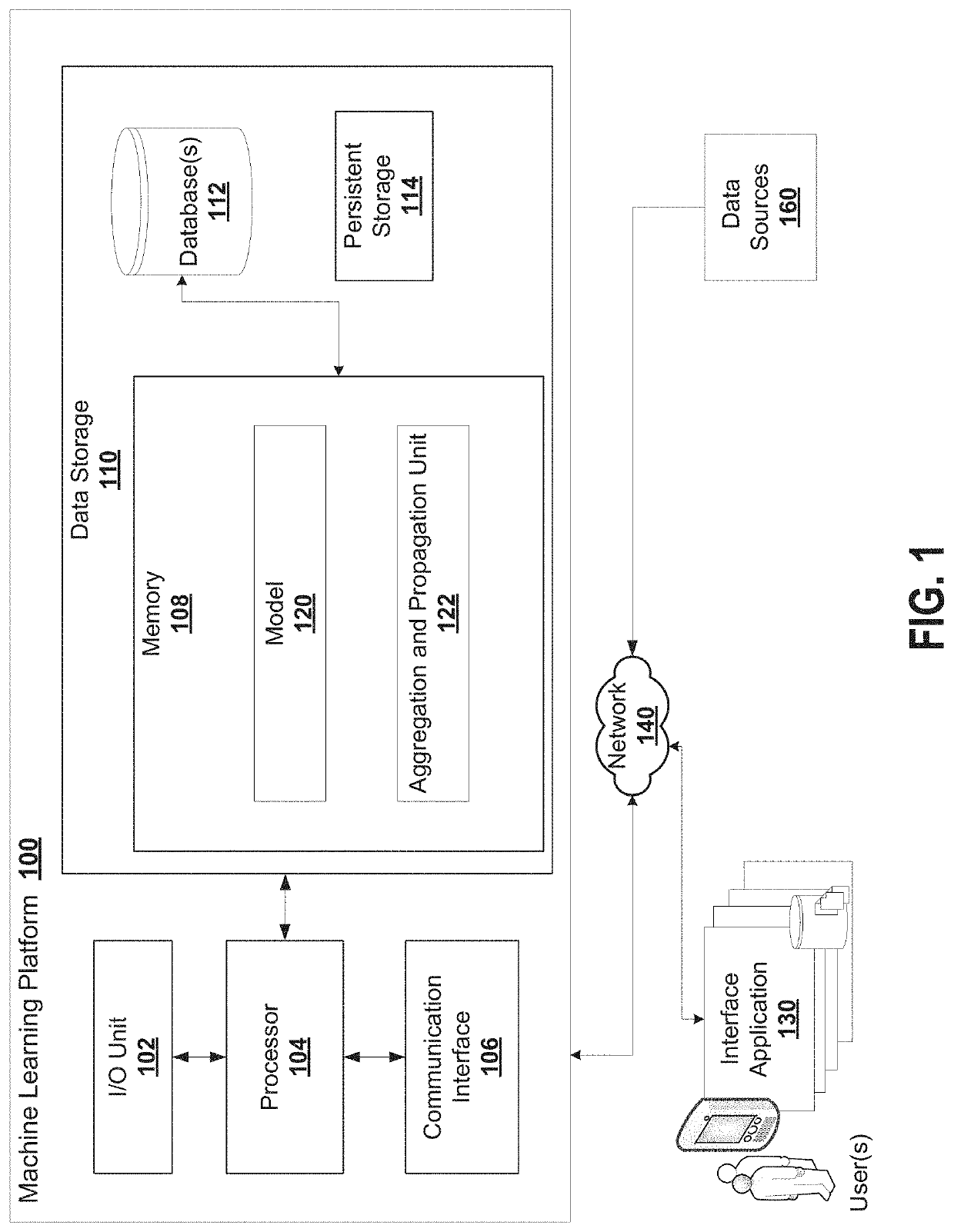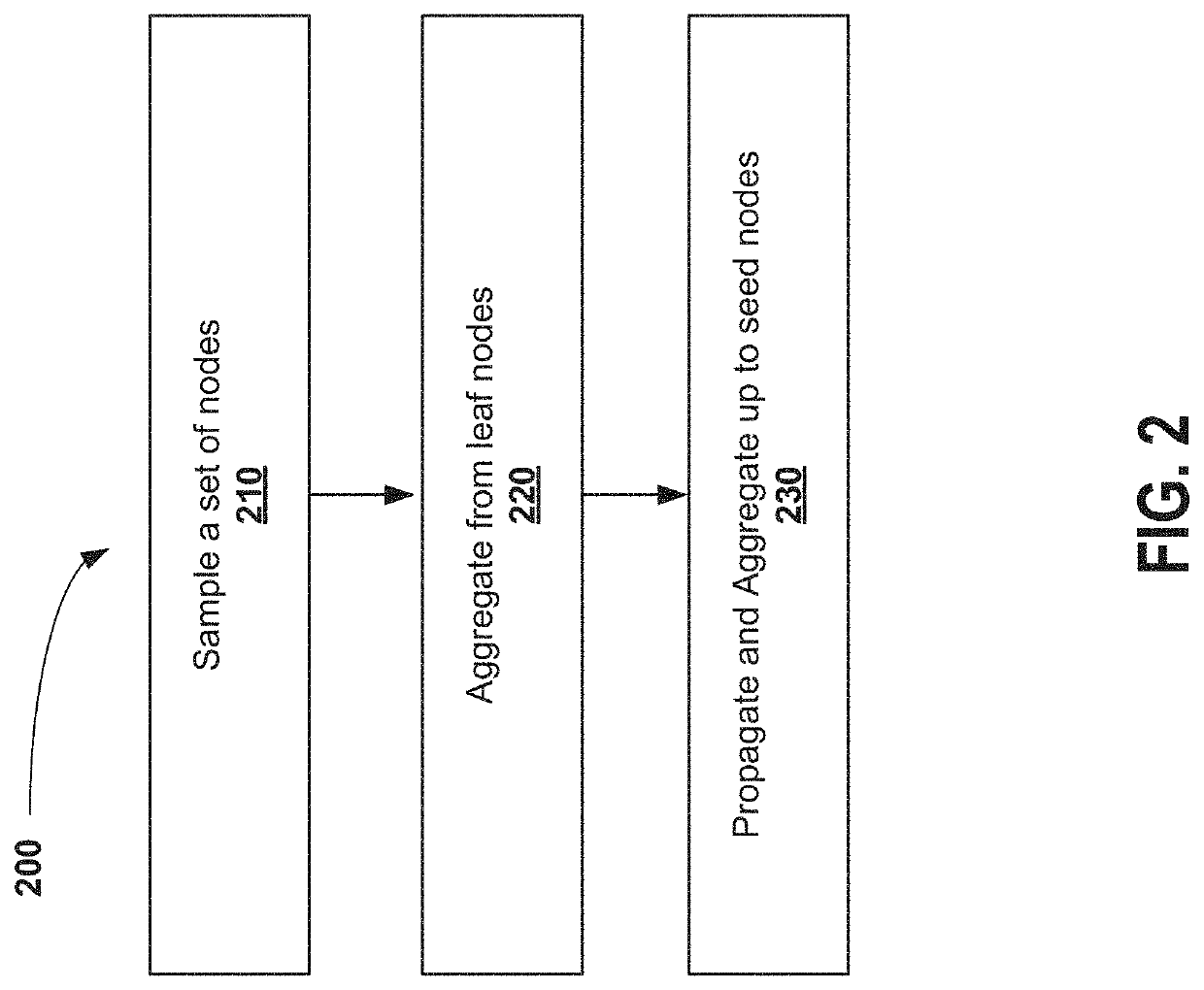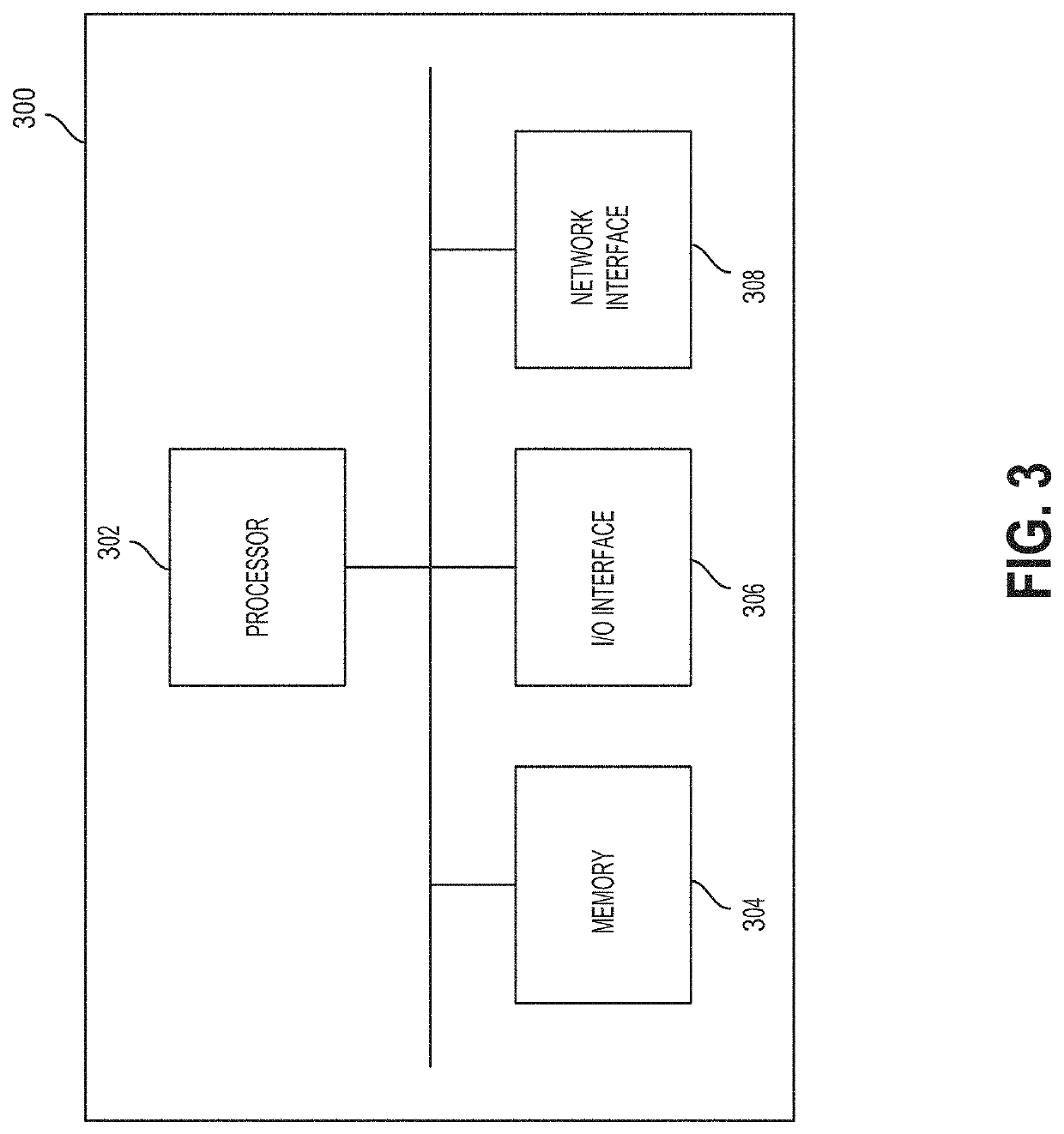System and method for machine learning architecture with privacy-preserving node embeddings
a node and privacy-preserving technology, applied in the field of machine learning, can solve the problems of not being able to accurately reverse engineer all of the friends and/or strengths of new users, not being able to accurately reverse engineer all of the friends and/or strengths in the context of conventional graph convolutional network approaches, etc., to achieve the effect of improving the security of the edge weights
- Summary
- Abstract
- Description
- Claims
- Application Information
AI Technical Summary
Benefits of technology
Problems solved by technology
Method used
Image
Examples
Embodiment Construction
[0064]Embodiments of methods, systems, and apparatus are described through reference to the drawings.
[0065]A technical challenge with the practical implementation of the GCNs is that they have a technical vulnerability in relation to inductive learning, where a malicious user is able to establish elements in the GCN that deliberately cause an inference between edges of logical objects that should not have connections with one another.
[0066]As far as Applicants are aware, there is no current research literature on privacy-preserving mechanisms for GCNs that are practically useful in view of privacy costs and scalability. Prior approaches to privacy have been proposed but are deficient in that they do not scale well to large graphs. The cost of implementing privacy becomes infeasible and performance is impacted to such an extent that it is not commercially practical. For example, a deficiency in applying the Johnson-Lindenstrauss (JL) transform that allows the publishing of a sanitize...
PUM
 Login to View More
Login to View More Abstract
Description
Claims
Application Information
 Login to View More
Login to View More - R&D
- Intellectual Property
- Life Sciences
- Materials
- Tech Scout
- Unparalleled Data Quality
- Higher Quality Content
- 60% Fewer Hallucinations
Browse by: Latest US Patents, China's latest patents, Technical Efficacy Thesaurus, Application Domain, Technology Topic, Popular Technical Reports.
© 2025 PatSnap. All rights reserved.Legal|Privacy policy|Modern Slavery Act Transparency Statement|Sitemap|About US| Contact US: help@patsnap.com



